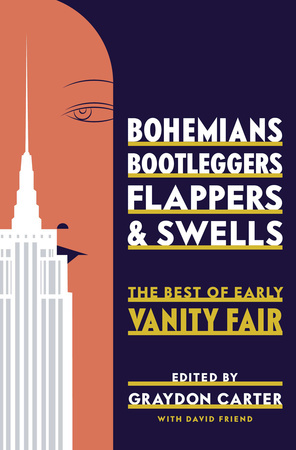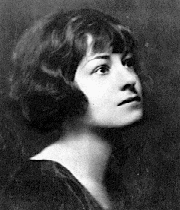 Anthology films are so underrated. The best ones are celebrations of form and concept, as they focus on pure theme rather than the conventions of more traditional features. Even the worst ones have something to offer, though, especially if multiple directors have contributed their work. Take 1989’s “New York Stories.” Frances Ford Coppola and Woody Allen may have contributed self-indulgent shorts but Martin Scorsese’s offering, “Life Lessons,” provided such an epic glimpse into obsession, the artistic process, and the male ego that it singlehandedly merited the price of admission.
Anthology films are so underrated. The best ones are celebrations of form and concept, as they focus on pure theme rather than the conventions of more traditional features. Even the worst ones have something to offer, though, especially if multiple directors have contributed their work. Take 1989’s “New York Stories.” Frances Ford Coppola and Woody Allen may have contributed self-indulgent shorts but Martin Scorsese’s offering, “Life Lessons,” provided such an epic glimpse into obsession, the artistic process, and the male ego that it singlehandedly merited the price of admission.
In general, New York-based anthology films may be the finest example of the genre; at any given moment, so many different worlds and eras coexist on the same tiny island that they’re bound to generate compelling fodder. An adaptation of Bohemians, Bootleggers, Flappers, and Swells, a collection of Manhattan-based Vanity Fair pieces written between 1913-1936, may be just what the doctor ordered, then. The glamour of that time is almost unparalleled, and matching the right directors to the various essays, poems, and profiles of this book would be like shooting fish in a barrel. We’d be bound to score at least once.
For fun, I’ve made this film a woman-centric endeavor. With the rise of the suffragettes and the flappers, this period of American history was more female-positive than most of the twentieth century, anyway. So consider these three possibilities.
A subway short directed by Lisa Cholodenko. In this section, commuters of a wide range of backgrounds and ages could be filmed with their thoughts running as overlapping voiceover. The twist: The thoughts would be comprised of selections from this anthology. A Jamaican woman accompanied by her three children could recite Edna St. Vincent Millay’s poem “I Like Americans.” (They are not grown up yet/They still believe in Santa Claus/ They are terribly in earnest /But they laugh at everything.) An older man clad in traditional Chasidic Jewish clothing, clutching a mysterious brown bag, could recite lines from T. S. Eliot’s poem “La Figlia Che Piange.” (So I would have him leave/So I would have had her stand and grieve/ So he would have left/As the body leaves the born torn and bruised.). A young man or transgendered person in neon-pink, skin-tight workout gear could recite terms from Walter Winchell’s “A Primer of Broadway Slang.” (“Coffee and cake money” is small salary. “Ankling” is walking. A “hootchie kootchie” is a “torso tosser” or “thigh grinder.”) A young woman in military gear could recite Gertrude Stein’s “The Great American Army.” (What do the boys say?/Can we?/In the middle/Or in the middle./The Great American Army/Nestles in the middle/We have hope/Certainly). The camera could follow a teenager walking down the subway cars, snatches of these inner dialogues swelling and receding as she passes the many characters.
A Jamaican woman accompanied by her three children could recite Edna St. Vincent Millay’s poem “I Like Americans.” (They are not grown up yet/They still believe in Santa Claus/ They are terribly in earnest /But they laugh at everything.) An older man clad in traditional Chasidic Jewish clothing, clutching a mysterious brown bag, could recite lines from T. S. Eliot’s poem “La Figlia Che Piange.” (So I would have him leave/So I would have had her stand and grieve/ So he would have left/As the body leaves the born torn and bruised.). A young man or transgendered person in neon-pink, skin-tight workout gear could recite terms from Walter Winchell’s “A Primer of Broadway Slang.” (“Coffee and cake money” is small salary. “Ankling” is walking. A “hootchie kootchie” is a “torso tosser” or “thigh grinder.”) A young woman in military gear could recite Gertrude Stein’s “The Great American Army.” (What do the boys say?/Can we?/In the middle/Or in the middle./The Great American Army/Nestles in the middle/We have hope/Certainly). The camera could follow a teenager walking down the subway cars, snatches of these inner dialogues swelling and receding as she passes the many characters.
Dorothy Parker’s “Why I Haven’t Married,” directed by Lena Dunham. Eat your heart out, Carrie Bradshaw: This essay by the Algonquin Hotel Round Table’s most touted writer resonates now more than ever. And with her atonal wit and appreciation of smart women (and smart fashion!) of all ages, Dunham could do wonders with the list of seven rejected suitors that Parker trots out for our general bemusement.  Just imagine who she could cast. Some options: “Jim, a Man About Broadway” could be played by Ed Norton, who recently lived up to his early promise in “Birdman.” “Lorenzo, the Life of the Party” could be played by (who else?) James Franco. “Paul, the Vanished Dream” could be played by Idris Elba for very, very obvious reasons. Dororthy herself could be played by Parker Posey, the sharpest tack in any room.
Just imagine who she could cast. Some options: “Jim, a Man About Broadway” could be played by Ed Norton, who recently lived up to his early promise in “Birdman.” “Lorenzo, the Life of the Party” could be played by (who else?) James Franco. “Paul, the Vanished Dream” could be played by Idris Elba for very, very obvious reasons. Dororthy herself could be played by Parker Posey, the sharpest tack in any room.
A mashup of Annie O’Hagan’s “Women Who Earn $50,000 a Year” and Colette’s “The Woman Behind the Mask,” directed by Rodrigo Garcia. In her article, O’Hogan profiled the few early-twentieth century women who were independently making what was then serious bucks. Colette’s short story featured a husband who falls in love with a mysterious, unattached woman at a ball. Together, the two pieces paint a portrait of that divine, still-rare bird: a female free agent. We could be introduced to a bevy of these brilliant women in their natural habitats, and then meet them again at this ball, where they’d be decked out in opulent jewels, gem-colored velvets and satins – and, of course, many, many clever hats. The husband wouldn’t know what hit him, his neglected wife could join their ranks, and the film could climax in an Amazonian dance of ecstasy.
I chose Garcia to direct this segment because no male director making American films demonstrates more love and respect for women in his work, and is more consistently penalized for this unabashed appreciation. But perhaps Bob Fosse, another filmmaker who adored women, could rise from the grave to choreograph and direct the dance itself. Now wouldn’t that be loverly?
This was originally published in Word and Film.
